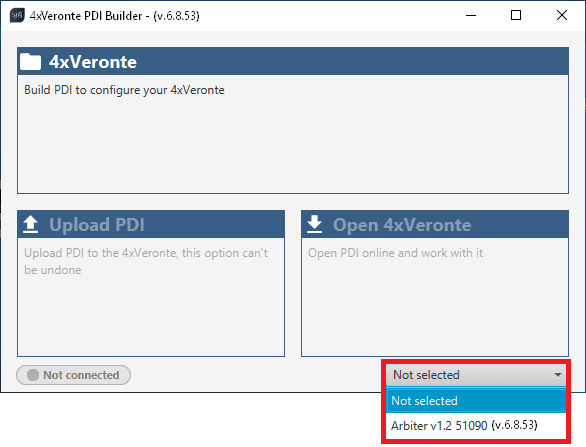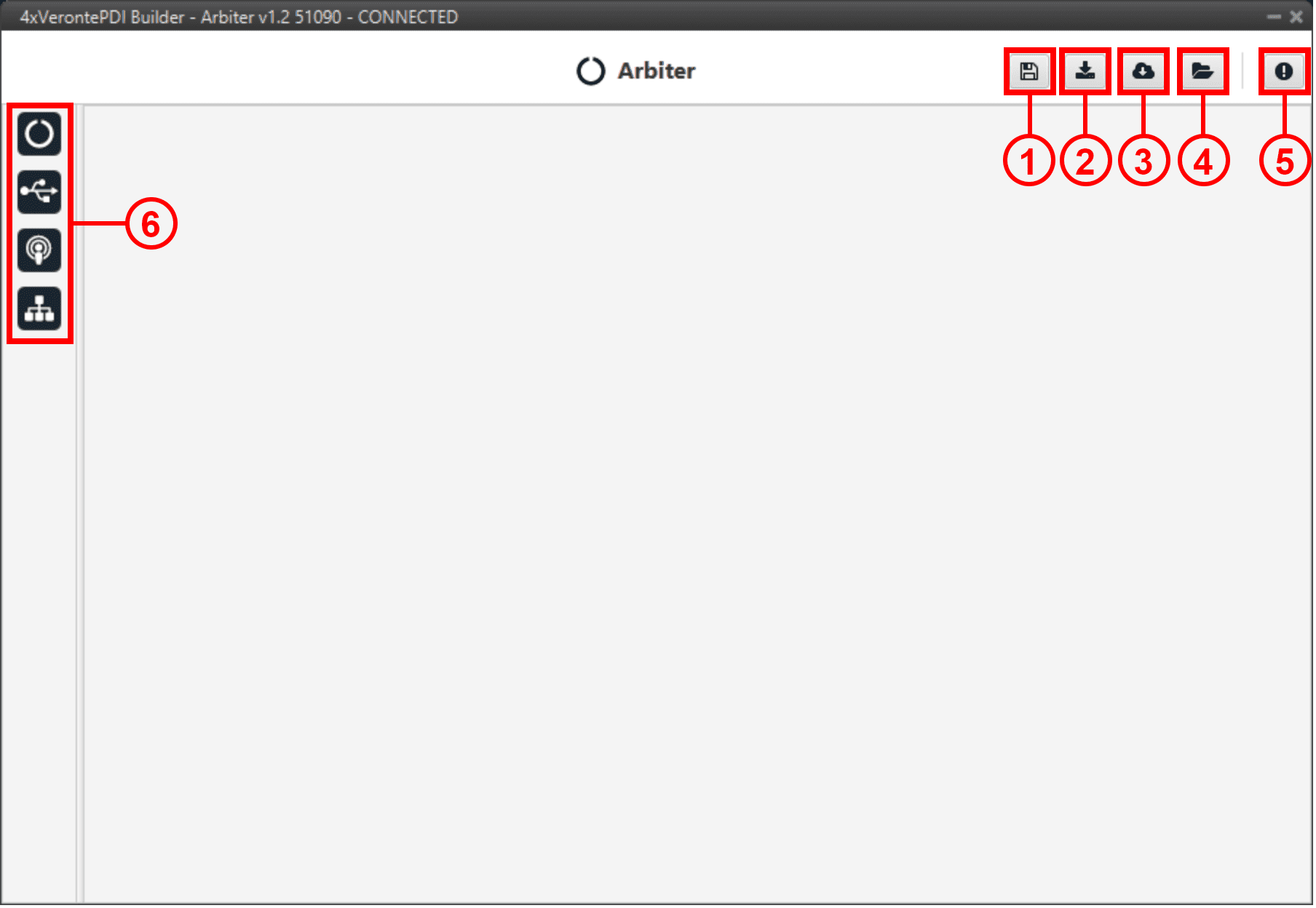Configuration¶
Once the installation is finished, connect the Arbiter of the 4x with Veronte Link. Then, open 4x PDI Builder and select the Arbiter.

If it is correctly connected, it will appear in Normal mode, as shown in the figure below, or Maintenance mode.

4x unit can also appears as: Maintenance mode (loaded with errors) or Normal mode - Disconnected.
Note
Maintenance mode (loaded with errors) appears when something is wrong with the configuration. For more information, see Troubleshooting section of this manual.
The user can access now to 3 configuration options:
4x Veronte. It allows the user to work with offline configurations. A previously exported PDI can be opened and modified. It is also possible to build a new one from the default configuration.
Upload PDI. A previously exported PDI configuration can be imported to the linked Arbiter (PDI files are transferred from computer to Arbiter).
Open 4x Veronte. It opens the configuration (the PDI files) loaded in the Arbiter (PDI files are transferred from Arbiter to computer). Then, the user can modify them online.
Note
PDI (Parameter Data Item) files are configuration files. They are used by modular control with improved version management. These PDI files are split in 2 folders. Each folder contains several .xml files:
arbiter: contains the configuration of the Arbiter. All control system and parameters are stored here.
xsd: contains .xsd files. An .xsd file is a definition file which defines the elements and attributes that can be part of an .xml document. This ensures that data is properly interpreted, and errors are detected, resulting in .xml validation.

PDI files¶
Warning
Users should never delete, replace or modify xsd files.
When Open 4x Veronte is selected, the unit changes to Maintenance mode.
The different ‘buttons’ that can be seen in the initial menu are explained below.

Save PDI. After changes are done, press here to apply changes.
After saving any changes, the Arbiter will RESET and the 4x PDI Builder software will close.
Danger
As the Arbiter is reset, it is not advisable to save changes during flight tests.
Note
This button will only appear if an Arbiter is connected. When working offline this button will not be available.
Export PDI. After modifying a configuration, press here to save the configuration in the local storage (the 2 folders with the PDI files are downloaded). Users can store this configuration in an empty folder or in the folder where the previously imported configuration is stored. With the latter option, the “original” configuration will be overwritten by the one with the new changes.
Import PDI from repository. The user can import a configuration file from the GitHub repository and modify it. After that, if the Save PDI button (1) is pressed, this configuration will be uploaded to the connected arbiter.
Import PDI from local storage. The user can import a configuration file from the local storage and modify it. After that, if the Save PDI button (1) is pressed, this configuration will be loaded into the connected arbiter.
Feedback. Users can report a problem they have encountered by creating an issue in their own ‘Joint Collaboration Framework’. The ‘Download’ button downloads a zipped folder with the current Arbiter configuration and more information needed for Embention to resolve the issue. It is advisable to attach this folder when creating the issue.
Note
The user’s ‘Joint Collaboration Framework’ is simply a Github repository for each customer.
If the user has any questions about this Joint Collaboration Framework, please read its user manual to know more.

Feedback window¶
These are the different functions of Arbiter. They are explained in the following menus.




